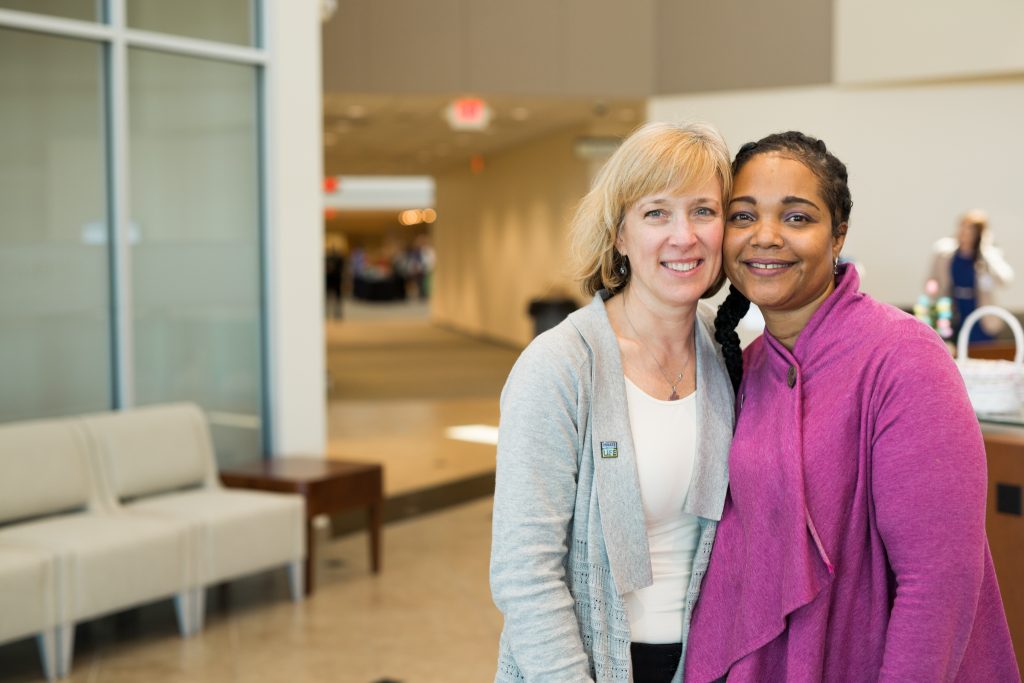When Pam Frink left her engineering career in her 40s to study nursing, she had no idea what God had in store for her.
Now, looking back, it all makes sense.
A seed planted
It was 2011 when Frink first considered becoming a living donor. She believes God placed this desire on her heart, much like he did when she decided to become a nurse. Currently a dialysis nurse with St. Elizabeth Healthcare, Frink was working at another hospital at the time in its dialysis unit. Her heart stretched with what she witnessed.
“Daily, I saw their pallor and fatigue from toxins building up in their blood,” she recalled. “I saw their pain and discomfort when being stuck with multiple needles or cramping when too much fluid was being removed. I saw their hope for a transplant ” and their hopelessness when the wait became years.”
The wait time for a kidney transplant can range from five to 10 years.
Drawn to do more, Frink contacted a hospital social worker to discuss living kidney donation. The social worker had a patient in mind. She was a single mom raising two young boys. Her first donated kidney failed after nearly 20 years.
“Virginia was just hanging on trying to get back on the transplant list,” Frink said. “I could see the struggle in her life. She was exhausted. You can’t take care of kids and work when you’re in dialysis treatment six hours a day, three days a week.” Frink continued to evaluate and contemplate living donation.
But the timing wasn’t right just yet.
In 2012, Frink experienced her own family crisis when her 16-year-old son was struck by a car and needed her full-time care. During this time, Frink left her job and put kidney donation on hold. Meanwhile, Virginia transferred her dialysis treatment to another provider.
A kidney for Virginia
Toward the end of her son’s recovery, Frink experienced a chance reconnection with Virginia in July 2015 when she saw her name on a friend’s Facebook page. She friended Virginia and soon saw her Facebook plea for a kidney donor.
“The seed had previously been planted, and now it was time to water it,” Frink said. It was a six-month process to ensure both Frink and Virginia met criteria for the donation and transplant surgeries.
In January 2016, Frink “shared her spare,” as she calls it, and Virginia got her new kidney, which she affectionately refers to as “Li’l Frink.” After an initial rejection scare, Virginia is now doing well and working again.
The two families stay connected. They celebrated Christmas together this year and are looking forward to a few pool gatherings this summer.
Gifts in return
Frink acknowledges that surgery is no easy decision, especially when it’s elective. But she also feels she didn’t need both her kidneys.
“Our bodies are built with some redundancy,” she explained. “I felt like I could change somebody’s life by donating one of mine.” And that, she did.
“Virginia has freedom now in how she spends her days,” Frink said. “I get to see a mom raise her boys and enjoy them without the limitations of dialysis.”
As gratifying as that is, Frink has gained even more.
“I’ve received so many things. It’s been a confirmation that if I follow what I feel prompted to do outside of myself, it grows my faith.” She urges others to listen closely as well.
“Listen to the little voice in your head that tells you to do something good.”

